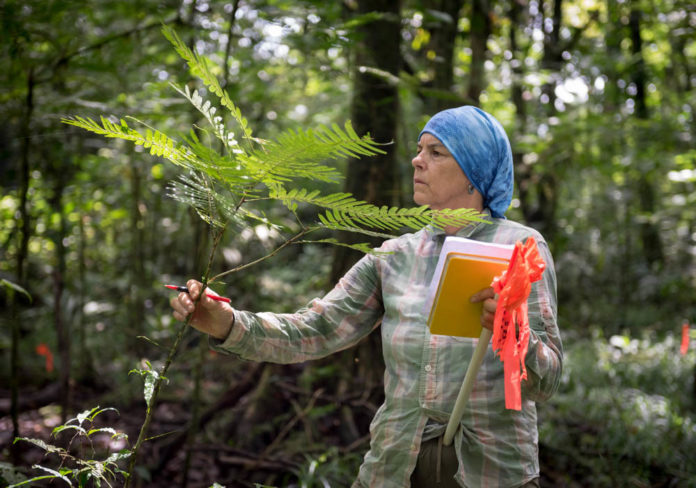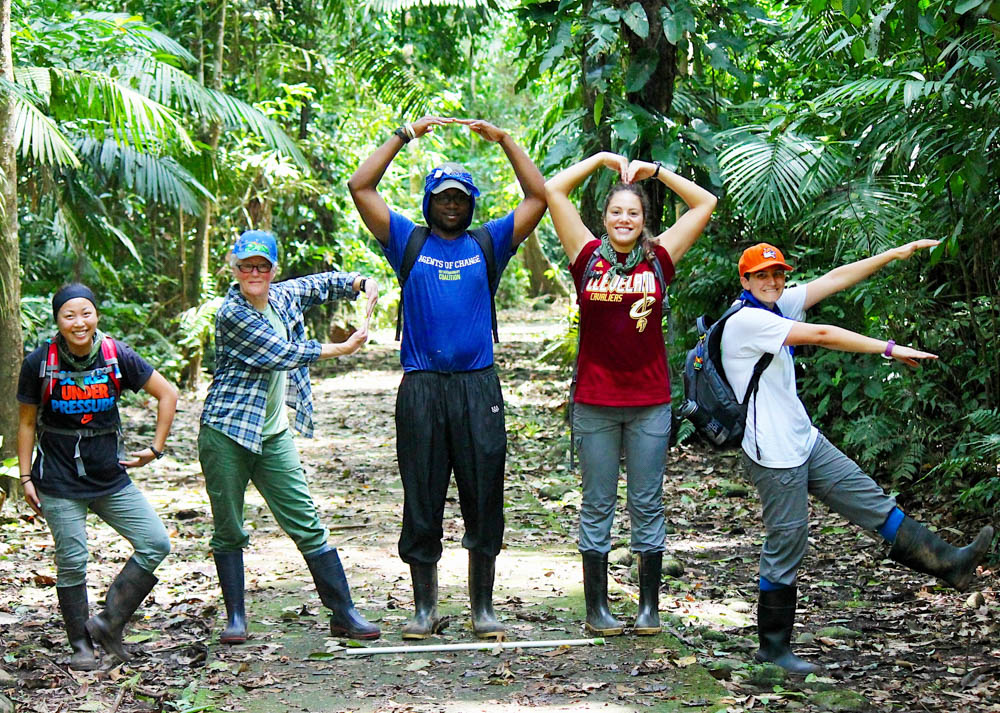
Professors in the biology department are traveling to deserts, rainforests and deep seas in order to conduct their scientific research. Professor Beth Braker is the leader of the faculty consortium that brings students on the La Selva program to the rainforest of northeastern Costa Rica each summer.
“One of the best parts of my job at Oxy is to take students there every single summer,” Braker said. “Between myself, Dr. North, Dr. Goffredi and Dr. Morrissey, probably over 150 Oxy students have been able to go to La Selva and do research — actual, original research on rainforest biology. We’ve studied everything from fungi and bacteria to plants and insects.”
According to Braker, having an international partner at an established research station is the key to a successful expedition. La Selva is run by the Organization for Tropical Studies, which provides researchers with food, shelter, lab facilities, internet, emergency response and transportation.

Occidental College students and faculty on a research trip to the La Selva Biological Station in Costa Rica, June 2017. The group studies plants and animals of the tropical rain forest in an intensive and immersive program.
(Courtesy of Marc Campos)
“They’re the local experts, they know how to do things,” Braker said. “If the road closed by a landslide, they know the alternate route. If a hurricane is hitting the country, they have a response in place to get us out. The reality is that having that kind of logistical support and international backing is really important. It helps us to concentrate on the science.”
Professor Gretchen North is one of the biology faculty who will travel to Costa Rica this summer. Her research focuses on the way plants deal with stressors, particularly with shortages of water. North goes to La Selva to study epiphytes, plants that reside in the canopy of the rainforest and grow off of other plants. Epiphytes lack roots in the ground, preventing them from having reliable access to water.
“They have all kinds of interesting, ingenious ways of storing water and coping with limited water,” North said. “The plants I’ve been working on most recently store water in tanks.”

According to North, Costa Ricans are conscious of their biological riches and protect them as intellectual property. Therefore, permits are required for biology professors conducting research, which North said are not easy to get.
“I approve of it — I think it could be perhaps streamlined — but they should protect their material. They should make sure that if there’s anything at all that’s profit-making, that they should share in the profits,” North said. “Fortunately, I don’t have to go through the most cumbersome part of that because my stuff doesn’t make any profit at all.”
North said she’s noticed deforestation in the region for the quick and efficient production of cash crops such as pineapple and palm trees.
“The biological station at La Selva is ringed around by pineapple,” North said. “The forest we go to is protected. But every year we go, it looks more and more like an island rather than a continuous forest.”
North said records from the La Selva station show that the dry season has been lasting longer, a result of climate change. According to North, Costa Rica has made key choices to emphasize the protection of its natural resources despite the fact that the country relies on pineapple and palm.
“Costa Rica is doing an amazing job trying to protect forests. It is also an amazing country for how it has decided to deal with trash and other ills that accompany population growth. There’s compulsory composting. There’s a far-reaching carbon neutrality program,” North said. “It’s very inspiring. I think that Costa Rica has riches for any biologist of course, but I also think that more social science students should go. It’s certainly a model for other countries in South America, but it could also be a model for states, such as California.”
Professor Shana Goffredi studies symbiotic relationships between invertebrates and bacteria. Her main focus is on marine invertabrates. She travels to the bottom of the ocean to study deep-sea animals, collect samples and conduct animal and microbial manipulations. Last semester, she traveled to the Gulf of California off of Baja California, Mexico at a depth of approximately 3,800 meters with the Schmidt Ocean Institute.

“We discovered totally new habitats and brand new species living there,” Goffredi said.
Goffredi also traveled for three weeks off the west coast of Costa Rica in a human-occupied submersible called ‘Alvin.’
According to Goffredi, her most recent interesting finding is a worm that lives in a calcareous tube and collects around deep-sea vents. The worm was previously thought to filter feed, but Goffredi’s findings suggest it actually teams up with a methane-oxidizing bacteria to feed.
“We see evidence of it incorporating methane into its tissues — and no animals can use methane as a source of carbon,” Goffredi said. “But by teaming up with bacteria, this worm now has this special power to use methane as a source of carbon. You wonder then, what is the giant sphere of influence of these habitats on other animals? We are currently uncovering this association and we’re really excited about it.”
According to Goffredi, the ocean is piling up with trash.
“We go to literally two miles deep in the ocean, and we see Coke cans, plastic bags and clothing,” Goffredi said. “It’s just unbelievable. We don’t necessarily see it unless its a giant floating garbage patch. It’s really shocking to me when we go deep into the ocean and we see human trash.”
Professor Amber Stubler takes students with her on research trips to the Carribean to study how humans have changed the way ecosystems function. She has traveled to Jamaica annually since 2007 to collect data from seafloor tiles on coral recruitment and get an idea on how the coral reef is changing — whether it is recovering or staying the same over time. Stubler received a faculty-led Richter Research Abroad grant and will take three students with her to Jamaica in June.

(Courtesy of Amber Stubler)
“We’re going to be able to match the survey data that we collect this summer to the ten years worth of coral recruitment, and it will give us an estimate of whether the corals that we sampled over the last 10 years making it successfully into the coral population,” Stubler said.
Professor John McCormack took students to Baja California with a grant from the National Science Foundation to resurvey the sites the birds housed in the Moore Lab were originally collected from. McCormack and his team of ten students and faculty accessed the site by carrying in equipment on horseback, a 5-hour trip to their camping site.
“There are literally no people in this mountain range at all,” McCormack said.
After two trips to the Sierra San Pedro Martir mountain range, McCormack has noticed some distinct changes, particularly in one bird called the Rock Wren, which has moved up into higher elevations. McCormack thinks this may be a response to global warming.
“Birds that were in the desert before have moved up into the pine forest,” McCormack said.
McCormack will travel to Veracruz, Mexico at the end of May. On this trip, no students will be in attendance as they have never visited this site before. McCormack said he prefers to take students on trips that have been proven safe in all respects.
![]()


































